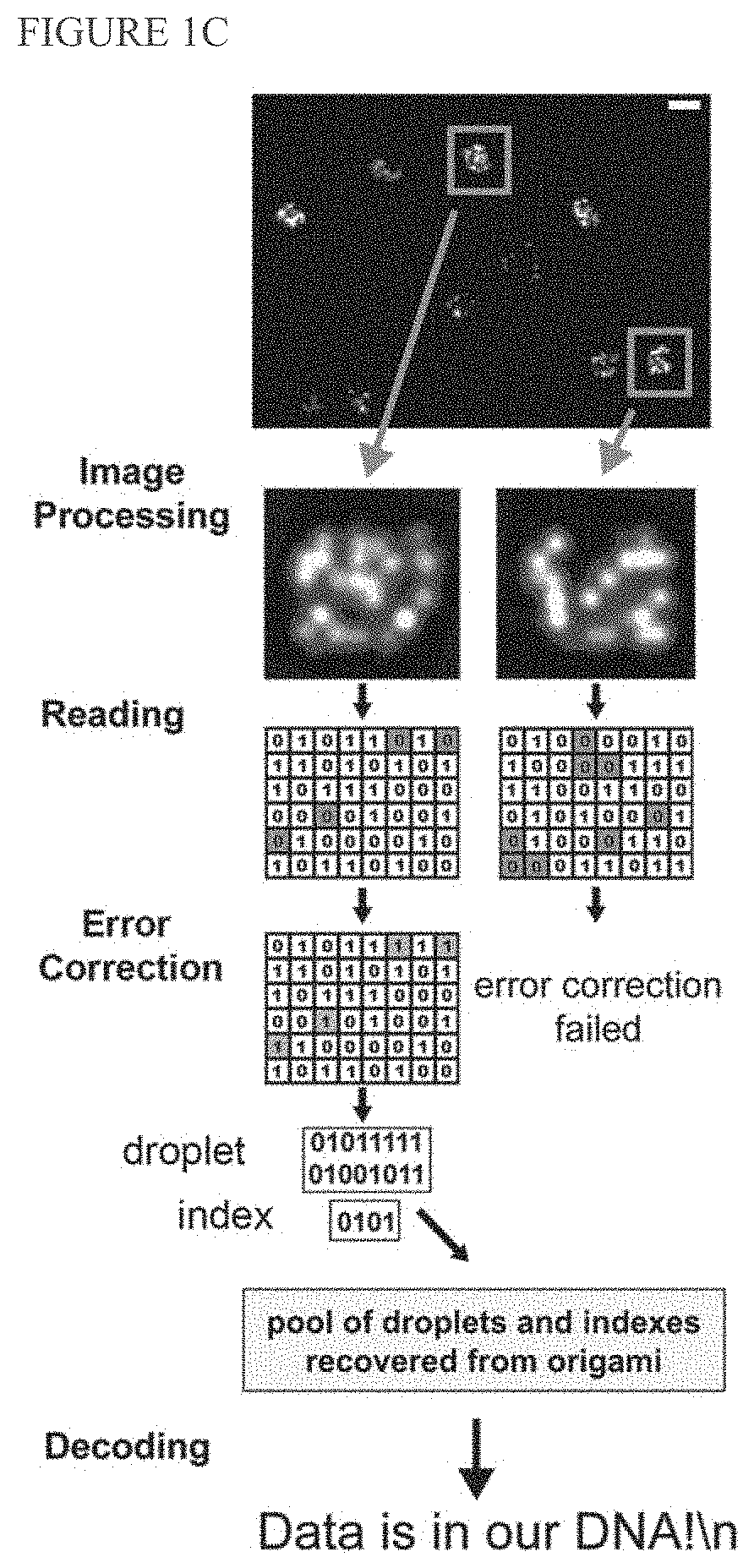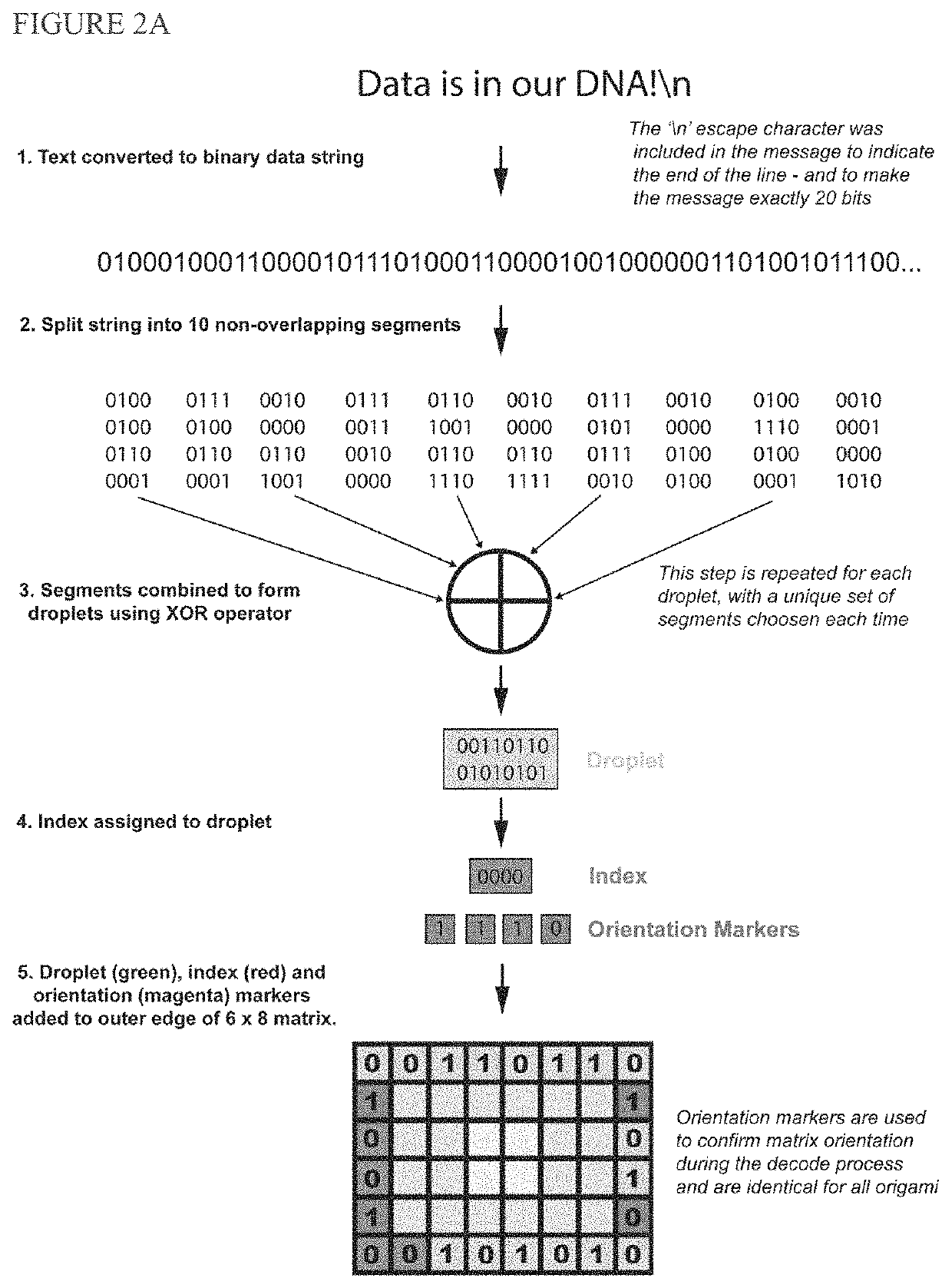Nucleic acid memory (NAM) / digital nucleic acid memory (DNAM)
- Summary
- Abstract
- Description
- Claims
- Application Information
AI Technical Summary
Benefits of technology
Problems solved by technology
Method used
Image
Examples
example 1
[0148]We report digital Nucleic Acid Memory (dNAM), a novel approach to DNA-based data storage. In dNAM, data is encoded by selecting specific combinations of single-stranded DNA possessing (1) or lacking (0) docking site domains. When combined with scaffold DNA these staple strands form DNA-origami optical breadboards from which data is read by monitoring binding of fluorescent imager probes using DNA-PAINT super-resolution microscopy. To enhance data retention, we created a multi-layer error correction scheme that combines fountain codes with bi-level parity codes. As a prototype, 15 origami were encoded with ‘Data is in our DNA!\n’, with each origami encoding a unique data droplet. Our error-correction algorithms ensured that we recovered 100% of the message even when individual docking sites, or entire origami, were missing. Unlike other DNA-based data storage systems, reading dNAM does not require sequencing. As such, it offers a new pathway to harness the advantages of DNA as ...
PUM
| Property | Measurement | Unit |
|---|---|---|
| Length | aaaaa | aaaaa |
| Nanoscale particle size | aaaaa | aaaaa |
| Temperature | aaaaa | aaaaa |
Abstract
Description
Claims
Application Information
 Login to View More
Login to View More - R&D
- Intellectual Property
- Life Sciences
- Materials
- Tech Scout
- Unparalleled Data Quality
- Higher Quality Content
- 60% Fewer Hallucinations
Browse by: Latest US Patents, China's latest patents, Technical Efficacy Thesaurus, Application Domain, Technology Topic, Popular Technical Reports.
© 2025 PatSnap. All rights reserved.Legal|Privacy policy|Modern Slavery Act Transparency Statement|Sitemap|About US| Contact US: help@patsnap.com



